A Wilder Vision—New Tropics Complex in The Zoo
Confidential Client (hereinafter “The Zoo”)
Situated within the city of Rochester, New York, The Zoo spans 20 acres and hosts a diverse collection of over 90 species, including mammals, reptiles, birds, amphibians, fish, and arachnids. The Zoo is in the process of constructing the largest indoor tropics complex of its kind in North America, along with a 220,000-gallon aquarium, with the expected opening date in 2025.
The Zoo inspires our community to connect with, care for and conserve wildlife and wild places. Through a series of research and planning strategies, the goal is to create a world-class, transformative, mission-forward, and inclusive experience for the Tropics Complex, that’s cohesive with the overall design strategy of The Zoo.
Research, Planning, Strategy, Created with Media–Objectives.

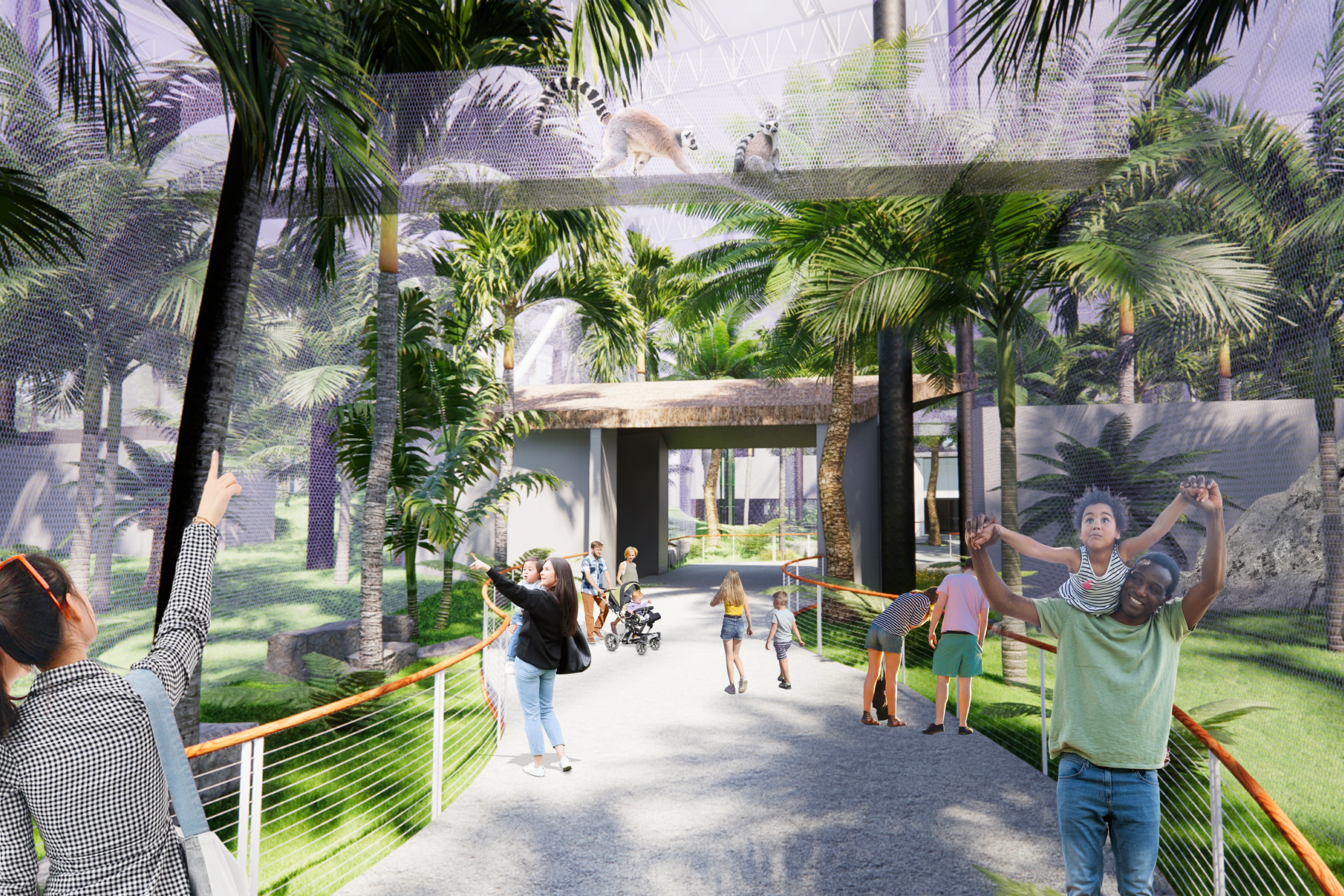
01—Discovery of The Zoo
Brand Identity—Permanent and temporary signage brings brand forward;
Symbols and Icons—Minimal graphic silhouettes reinforce nearby animals, create a sense of place;
Destination ID & Directionals—Existing wayfinding signage feels worn and out-of-place, but is effective;
Interactive—Wide variety of interactive elements, particular focus on photo opportunities;
Realm Transitions—Distinct signage in place for several “realms”, recommend all “realms” have ID signage;
Interpretive—Varied style and approach with interpretive graphics;
Animal ID—Clear and cohesive system in place, need to study updatability;
Digital & Audio—Used throughout Zoo, opportunity to find system that is easier to operate and maintain;
Donor Recognition—Various designs of giving signage throughout Zoo;
Supplemental—Various Guest Etiquette, Regulatory & Information signage throughout.






























02—Interview with Key Stakeholders
Opportunities
Nothing is sacred—but let’s be smart and purposeful
Keep in mind all guests—design for varying ages, abilities, and interests
Multiple sensory experience—think of sound, touch, visuals, smell, and feelings
Cohesive, from start to finish—create an immersive experience, connected to the environments and habitats
Digital is a great tool—let’s confirm why, where and how
Anchor on our brand—keep it clean and simple, desire to distinguish with colors
Challenges
Purposeful programming—everything has a cost and too much signage = overload
Strategic use of materials, visuals, and tech—humid conditions, varying levels of light (daylit > dark), and current limitations with connectivity
Updatable, flexible and sustainable—constant change of animal locations and busy staff, create a plan that works for today as well as tomorrow
Inclusive design—find the right ways to connect to persons with hearing, sensory and/or physical disabilities
Evolving the narrative—engaging with guests on how they can help with the Zoo’s conservation efforts
Content
Bring the conservation message forward—focus on the Zoo’s Mission and Values throughout all content
Avoid crisis messaging—instead inspire hope, tell human aspect of story
Develop a framework—to deliver a macro to micro message, one that’s global and local
Bring in real-time data—find opportunities to present current information, see the impact the Zoo is making
Lean on the experts—Seneca Park Zoo has a highly educated and experienced staff that will guide the story
Process
Present options—Take us on a journey with you, present multiple options from light to heavy touch
Data driven design—Lot’s of opinions, pull research of proven cases to backup design decisions
Be patient—Three different organizations that have varying responsibilities and goals, things take time
Dream big and realistic—Let’s not forget about the budget, the County will need to sign-off on costs
Bring it all together—Find the right moments to engage with the right people and organizations

03A—Research of Benchmarking & Best Practices
Above is research of benchmarking institutions across the country and world. These zoos, aquariums, museums and exhibit design experiences have provided valuable insights and best practices that will inform and enhance an unique approach to creating a world-class facility.
Visual similarity—Common graphic style and presentation of signage & graphics = opportunity to change the visual narrative
Clear definition of the story—Use of thematic design through visuals and language
Simplistic design and narrative—Most successful applications maintain clear, simple design
Enrich the experience—Expand upon what the guest is able to encounter at the zoo
Design to each unique environment—Awareness of conditions including lighting, space, etc.
Landscape immersion—“Immersion landscaping plus graphics…should be strong enough to achieve the purpose”
Facilitating a learning environment—Lied Jungle: “Intended to be a giant classroom to affect public attitudes and awareness.”
Leverage wonder—Creating experiences that encourage visitors to look closely
Specific design style: engagement—Style is friendly, approachable and focuses on “abilities and features”
Creating a sense of place—Increase accessibility and inclusion; celebrate culture & diversity
Interactivity & accessibility—Floating magnifiers around touchpool










03B—Research of Inclusive Design
Through various Inclusive Design cases studies above, they have enhanced the importance of creating personalized design solutions for specific groups of guests that may experience difficulty when navigating the zoo and enjoying its activities. Here are some design opportunities per user group:
For hearing-impaired users
Sign Language
Transcripts / Subtitles
Headphones
Volume controls
Contact methods - Need help? (online chats / emails)
Alternate methods to "feel" audio (vibrations)
Provide content in various representations (picture, braille, sign language, other languages, etc.)
Provide accessibility map
Create wheelchair-friendly activities
For visually-impaired users
Ability to hear messaging
Ability to enlarge text
High-contrast messaging
Tactile interpretive signs
For Autistic/Sensory-Needs users
Pre-visit information and visit planning
Signage providing alert of upcoming sensory moments
(ex. smells, noise, lighting, etc.)Volume controls
Headphones
Controlled lighting (minimize movement/strobe)
Technology experience incorporation
For Varying Ages (ex. Children vs. Seniors)
Pre-visit information and visit planning
Typography—Larger text
Graphic/Text balance
Mounting Heights
Leverage lighting options
For (Physically) Handicapped Persons
Pre-visit information and visit planning
Mounting Heights
Supplemental interactive activities (i.e. Parallel Play)
You-Are-Here maps
04—Audience Overview & Guest Flow
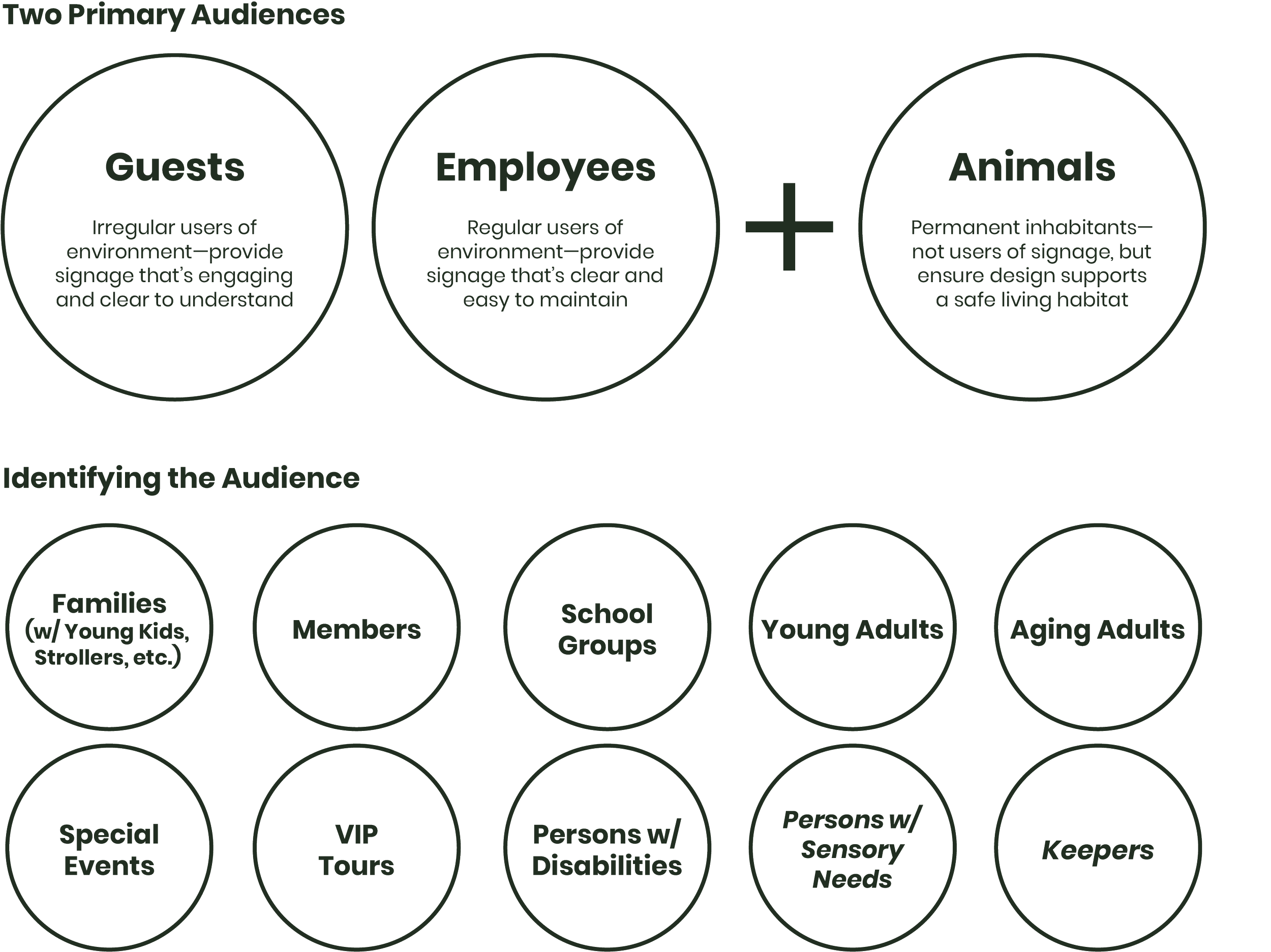
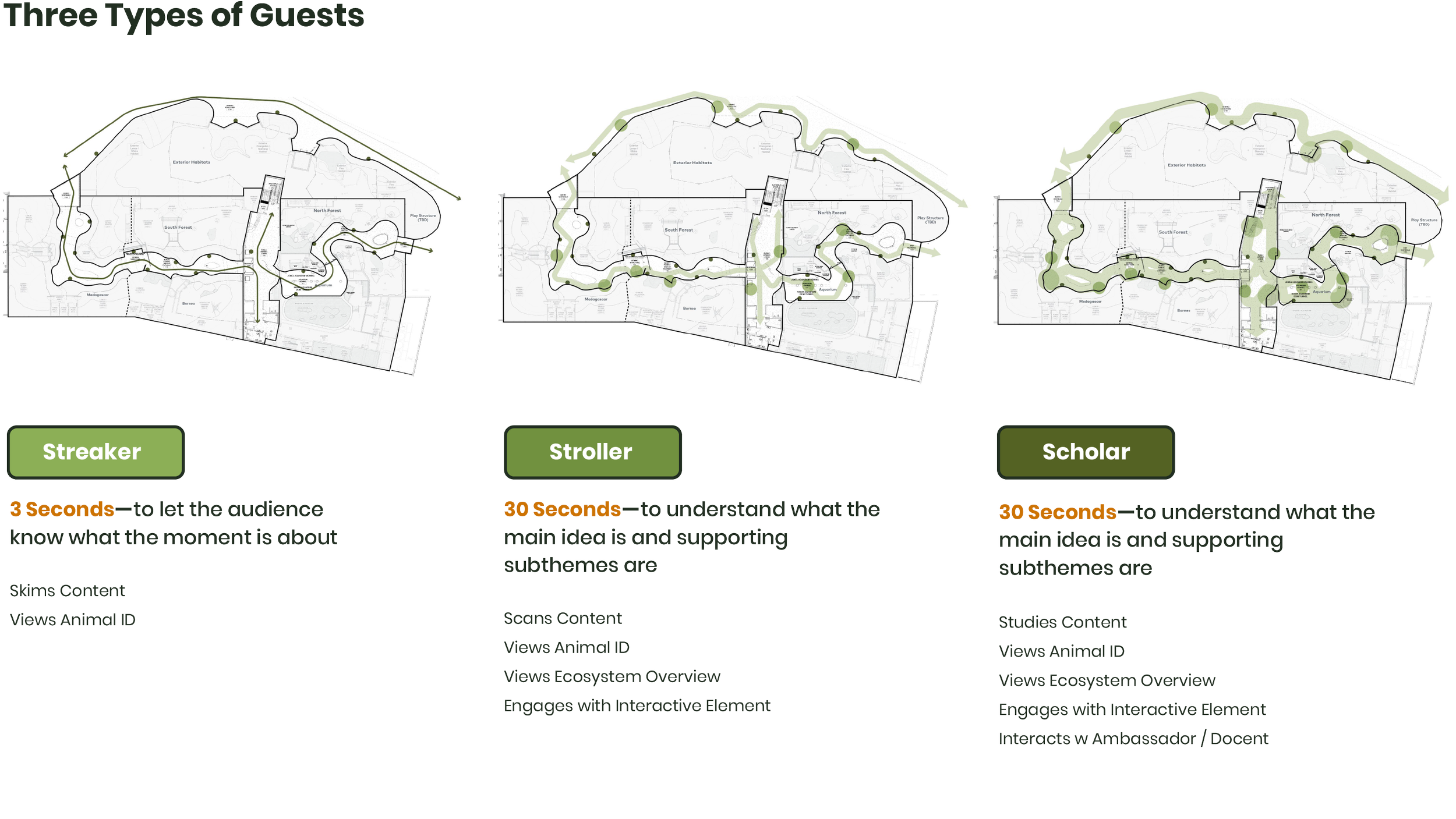
05—What Is The Story
This project is bringing a unique tropics environment to Rochester. During a workshop with key stakeholders and zoo staff members, numerous content elements were identified to help tell this story and distinguish it from other zoo and aquarium experiences.
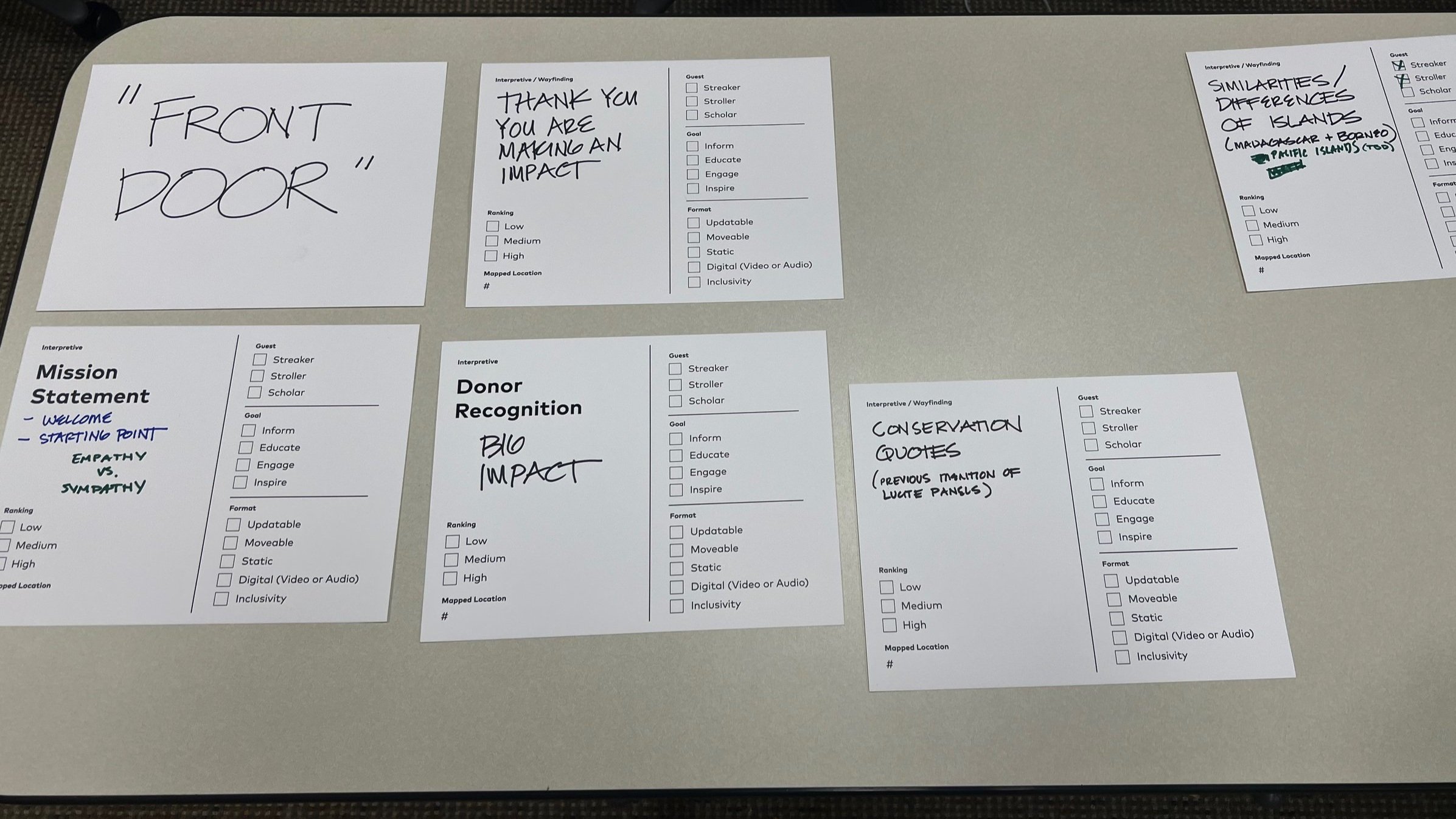

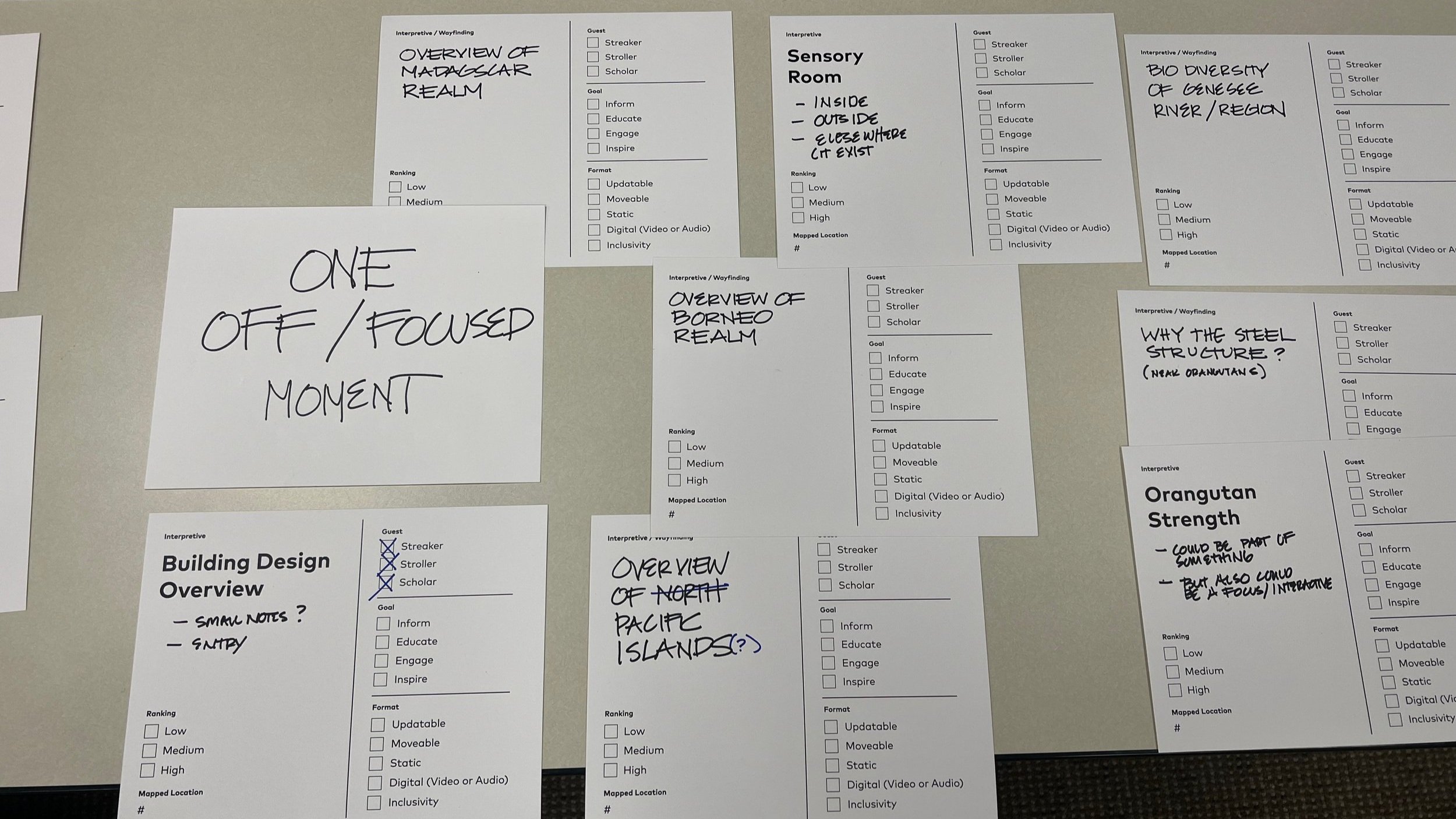
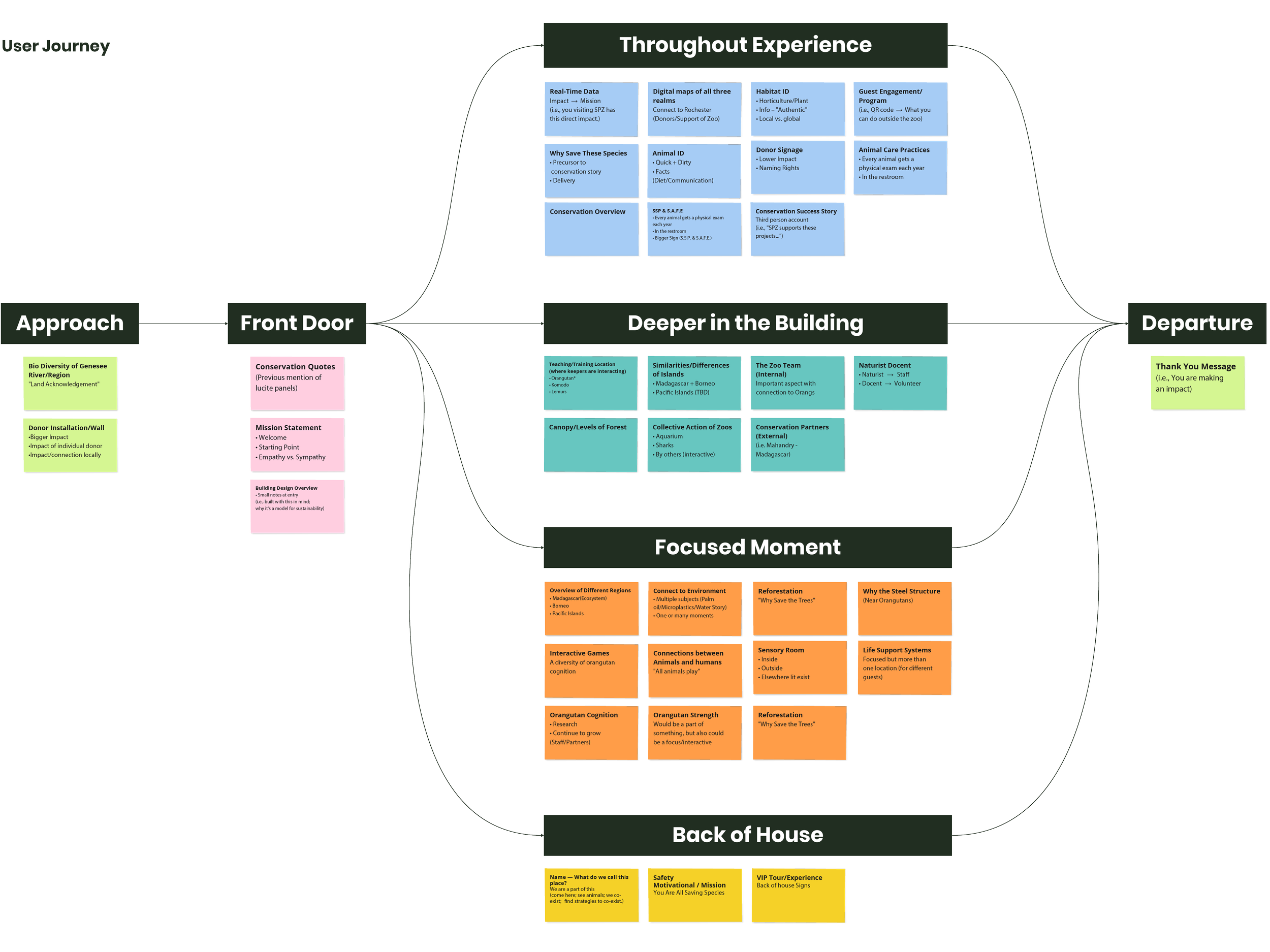
After organizing all general topic and specific story opportunities along the user journey, the question was “how does this all get tied and thread together?”
Taking a step back to review The Zoo’s messaging today—“inspires our community to connect with, care for, and conserve wildlife and wild places” and what were discussed in the workshop also led to these three pillars.
Connect
“Create a human to animal connection and relationship”
“Enrichment of experience”
“Making guests fall in love with the animals”
“Sense of awe”
Care
“Humans are a part of ecosystems”
“Creating empathy vs. sympathy”
“Currently, we don’t show ‘how we care’ well”
Conserve
“This space and beyond is ours”
“Guests contribute to conservation”
“Action in Rochester affects natural habitats”
“Desire to help, call to action”
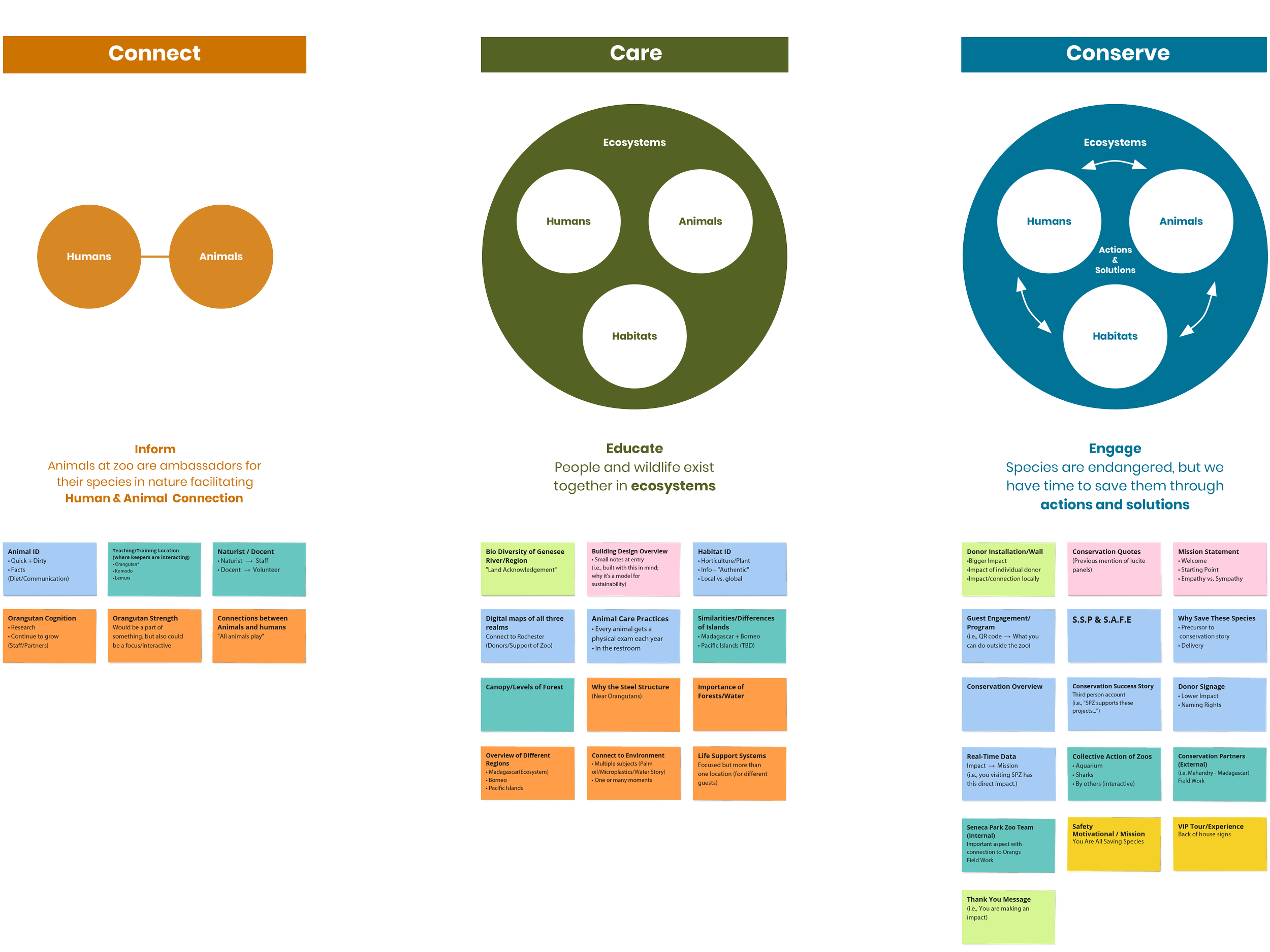
Therefore, The Zoo’s mission, “Connect, Care, and Conserve”, is a great framework to simplify all content and topics from the user journey experience and tie them together.
